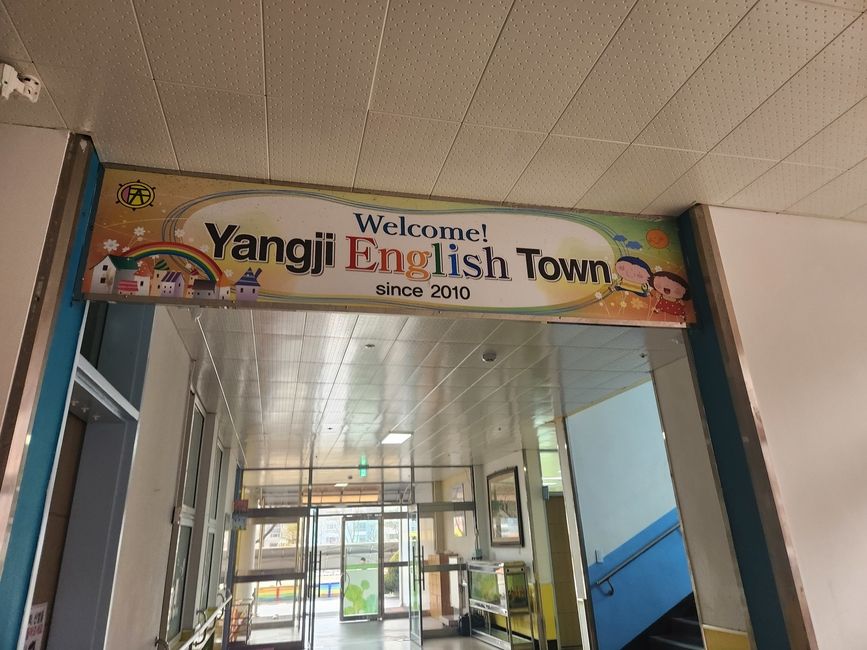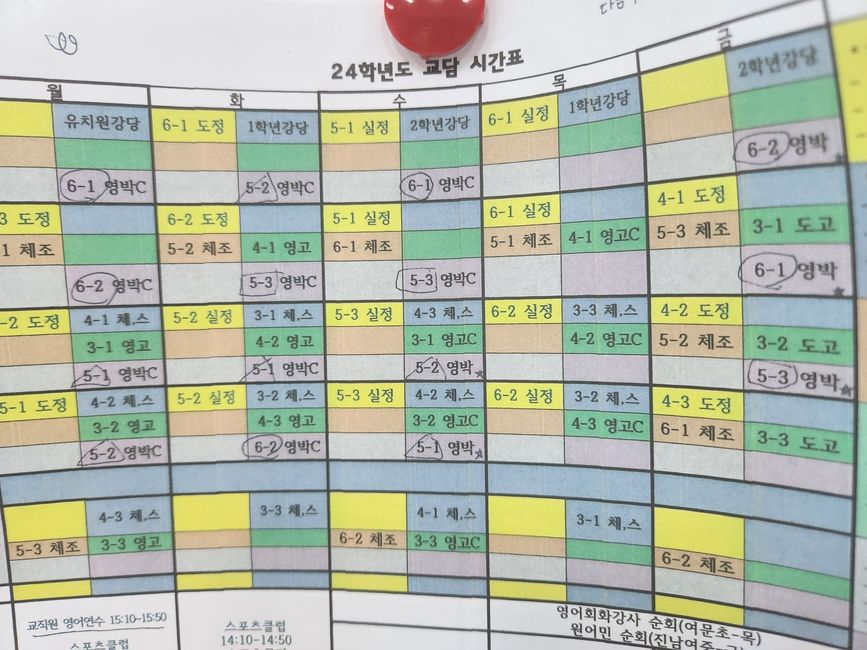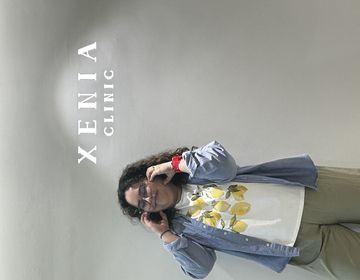CIEE: What's It Like Teaching English in South Korea?
I arrived in South Korea during the fall and landed in the second Semester. It was an awkward start to my teaching journey, but I recently started Semester 1 in my elementary school. Being an English teacher is restless. From lesson plans to desk warming, something always needs to be done. A lot of things have changed for me since my first Semester. I have gained insight into school life in South Korea, learned how to improve my lessons, and connected better with my co-teachers.
A Day in the Life of Ci Teacher (That's Me!)
- 6:00-7:30 Getting ready for the day
- 8:00-8:15 Walking to school
- 8:20-8:50 Gathering my materials for my lessons
- 9:00-9:40 First period
- 9:50-10:30 Second period
- 10:30-10:50-20 minute break
- 10:50-11:30 Third period
- 11:40-12:20 Fourth period
- 12:20-1:20 lunch
- 1:20-2:20 Lesson planning
- 2:40-3:10 First grade afterschool class
- 3:10-4:40 Lesson Planning/ Go home
The schedule above represents my workday schedule in general. This schedule doesn't account for my other responsibilities or my travel school time.
Getting Ready and Walking to Work
When I get ready, I always check the weather beforehand. If there is a chance of rain, bringing an umbrella will be a good idea because a drizzle can turn into heavy rain. My transportation to my school is walking because it will take 10-15 minutes to get there from my house. I have a travel school that is separate from my central school, and I also walk. Traffic here in South Korea can sometimes be very intense. I have seen cars that will run a red light when people are walking in the crosswalk. You will also see a lot of jaywalking because the crosswalk lights take a while to change compared to America.
Another note: I recommend wearing shoes that are easy to put on and take off. Schools in Korea have separate shoes that both teachers and students wear when they are indoors. They take off the shoes they wear, walk from the outside, and place them in a cubby.
Typical Workday
After changing my shoes, I head to the English classroom and turn on the heater so the students are warm when they arrive. I then head to my office space, which I share with my co-teacher. I turn on my PC to see if I have any messages in the school messaging app, "Cool Messenger." I print out any worksheets, make some final edits to my class presentations, and head to English classroom B.

My main co-teacher and I teach our 5th and 6th-grade classes in this classroom. I lead most of our classes together, and my co-teacher helps me translate instructions or information for the students into Korean. My school is textbook lead, meaning that most of my materials come from the textbook. The lessons that I enjoy doing with my 5th and 6th-grade classes are the reading lessons. My favorite lessons to teach are the reading lessons because the students love to use funny voices during our read-out-aloud activities. It is the one lesson where the students can enjoy the class without feeling pressured about the language and have fun.
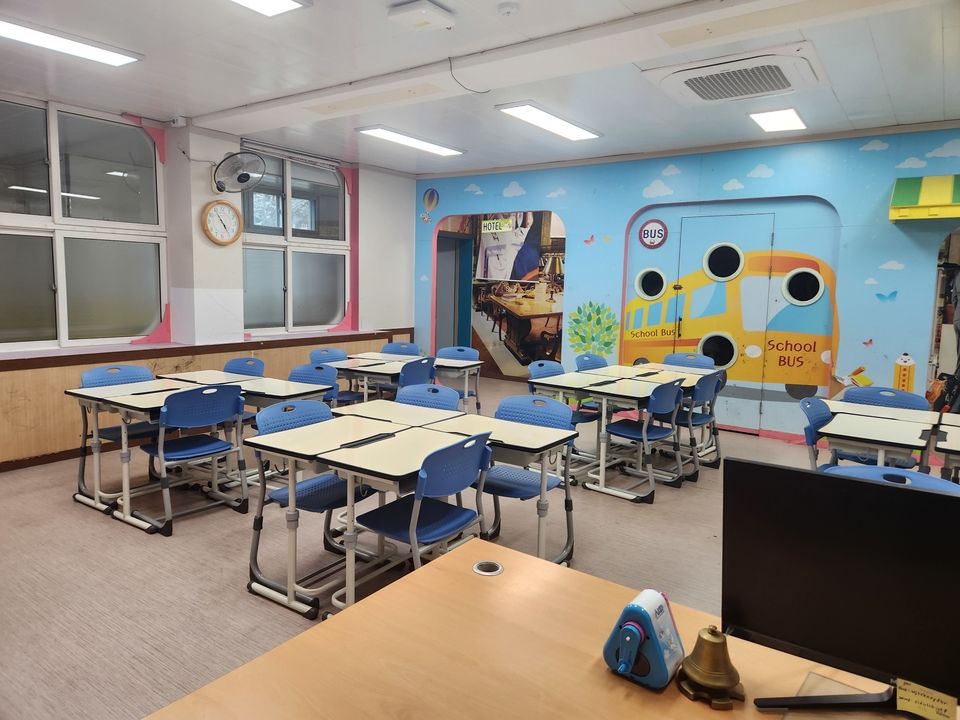
Wednesday and Thursday are when I teach my 3rd and 4th grades with my other co-teacher. We split the lesson between us since she has the students for most of the week. I am responsible for leading the listening and speaking lessons. My classes consist of reading English words to the students to listen to how they sound and listening to the student's pronunciation when they repeat the words. My favorite lesson is when we have "Showtime," which is a lesson that occurs towards the end of the overall lesson, where the students roleplay a story in groups using the critical expressions from the lesson. The students are creative with the characters and show much energy in their roleplay.
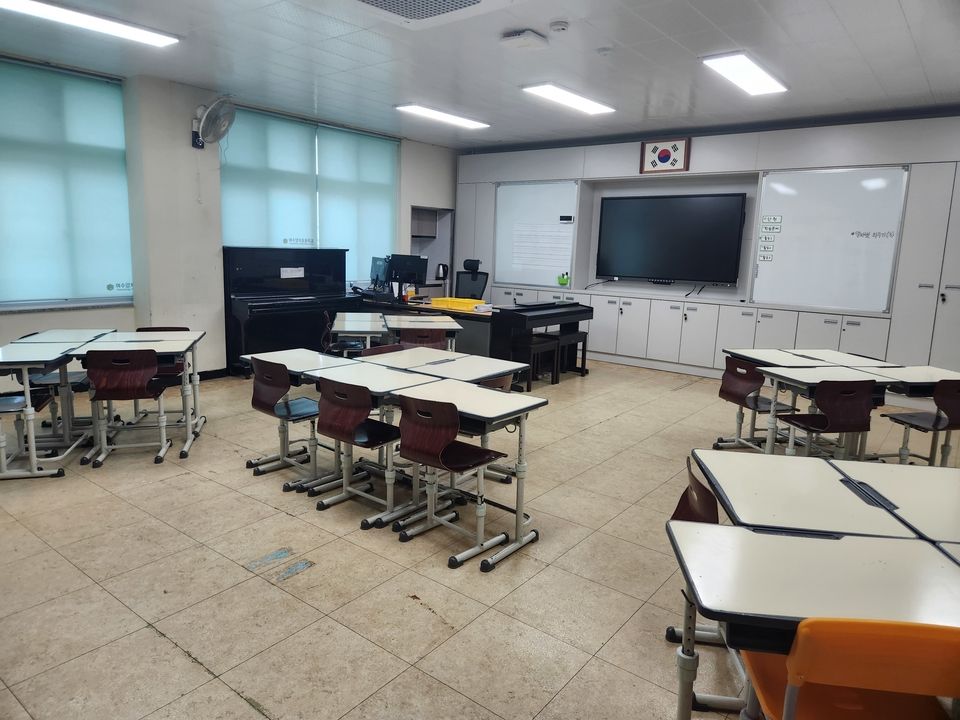
As mentioned in this post, I have a travel school and an all-girls middle school. I attend the middle school every Friday, and my lessons are focused more on listening and speaking. I have my classroom, which is where my co-teacher from the middle says that I have complete control over how I would like my classroom to be. I have my classroom desks in groups like in my main school because group work would be more effective for practicing speaking English in pairwork. My favorite lesson would be learning how to order food because I had time to discuss the differences between food from Korea and America. They were surprised when I told them about New York-style pizza.
Other Responsibilities
Besides teaching within regular school hours, I have additional English class time with first graders. It acts as an afterschool class that allows students to have an English lesson for 40 minutes every Tuesday. The lessons are not as concrete as the lessons for my other grades. I am free to select any topic I want as long as it is at their English level and allows them to practice English. The first graders love art and crafts activities. My favorite lesson with them so far was when I had them make Easter bunny ears. They had so much fun learning about English vowels.
Another class I have is teaching English to the teachers in my school. This class is called "Teachers Workshop." This class is held every Monday after school as a time for the teachers to learn more about English or to connect with the native English teacher. It is my job to prepare lessons about topics relating to English to discuss with the teachers. A way to help me narrow down what subject the teachers would have helpful is by creating a survey for the teachers to fill out.
What Is It Like Teaching with a Co-teacher?
One thing is for sure: not every co-teacher will be the same. Co-teachers' English levels will vary as well. My co-teacher for 3rd and 4th grade can communicate some information in English, but most of the time, we will use Papago to ask more specific questions. Ask about their classroom style at the beginning of the Semester or when you first meet your co-teacher. How do they like to teach a class, divide the work with a previous native English teacher, and what would they want to avoid when planning lessons? It will help you get into the same tune as your co-teacher and reach a compromise. When preparing lessons together, have time in your week to discuss the lessons you plan on teaching and what you expect from each other during class time. There might be times when miscommunication occurs because of the language barrier, so ask for clarification before making any negative assumptions. If you face a problem you can't handle on your own, do not be afraid to ask your co-teacher for help because it is their job to help you, and you help them.
Teaching Tips
Here are some teaching tips that I would like to share with you if you are becoming an English teacher or thinking about it.
USBs Are Your Friends!
Once you land in South Korea, grab a USB from your local convenience store. You will have a lot of lesson plans, important documents, and helpful learning game PPTs and will need a safe space to put them. We can store our documents using Google Drive, Microsoft Drive, etc. However, you must be prepared in an emergency, like if your school WIFI is out and you can't access your account and documents. You will have all your documents with you at hand.
Keep It Friendly and Straightforward.
When teaching for the first time, you can have this urge to over-analyze when we teach. I am here to tell you that only some things need a 10-minute explanation. A good rule of thumb is to stay within 5 minutes maximum when explaining something to your class, especially if they are learning a new language; it is best to stay moderate with information. If you need help figuring out what needs to be taught and what can be left out of your lesson, look at your school textbook and ask your co-teacher or even other foreign teachers for advice on your lessons.
Work out a plan to lesson plan. Time management is essential!
Ah, yes, lesson planning: when you sit down and write out your lesson in detail to have a flowing class time. That sounds easy, but if you struggle with time management, you could have trouble having time to plan lessons. I know. I was in the same boat where I would know what the lesson was, but my lesson would either go overtime or finish earlier, and I would not have any extra activities for my students. A method that has helped me is writing out each section of a lesson from the textbook and adding in my notes what games I should include for the lesson and what words or expressions were important. I even wrote some translations in Korean so I could add them to my presentation. I write my upcoming lessons every Friday and review them on Monday when I come to work.
Related Posts
How to Go to the Doctor in South Korea as an English Teacher: A Guide to Healthcare and Health Insurance
As an English teacher in South Korea, maintaining good health is essential while living abroad. Navigating the healthcare system can seem daunting and stressful at first, especially if you can’t... keep reading
CIEE CHINGU – A Partner Program for Teachers in Korea
Chingu ( 친구 ) is the Korean word for friend . CIEE Chingu is a partner program included in CIEE’s Teach in South Korea programs! Our goal is to connect... keep reading
TWICE with CIEE: Kayleigh in Korea (PART 1)
Kayleigh is a CIEE alum who participated in CIEE's Teach in South Korea program AND CIEE’s Teach in Spain Volunteer program! CLICK HERE to read her experience in Spain. WHY... keep reading
